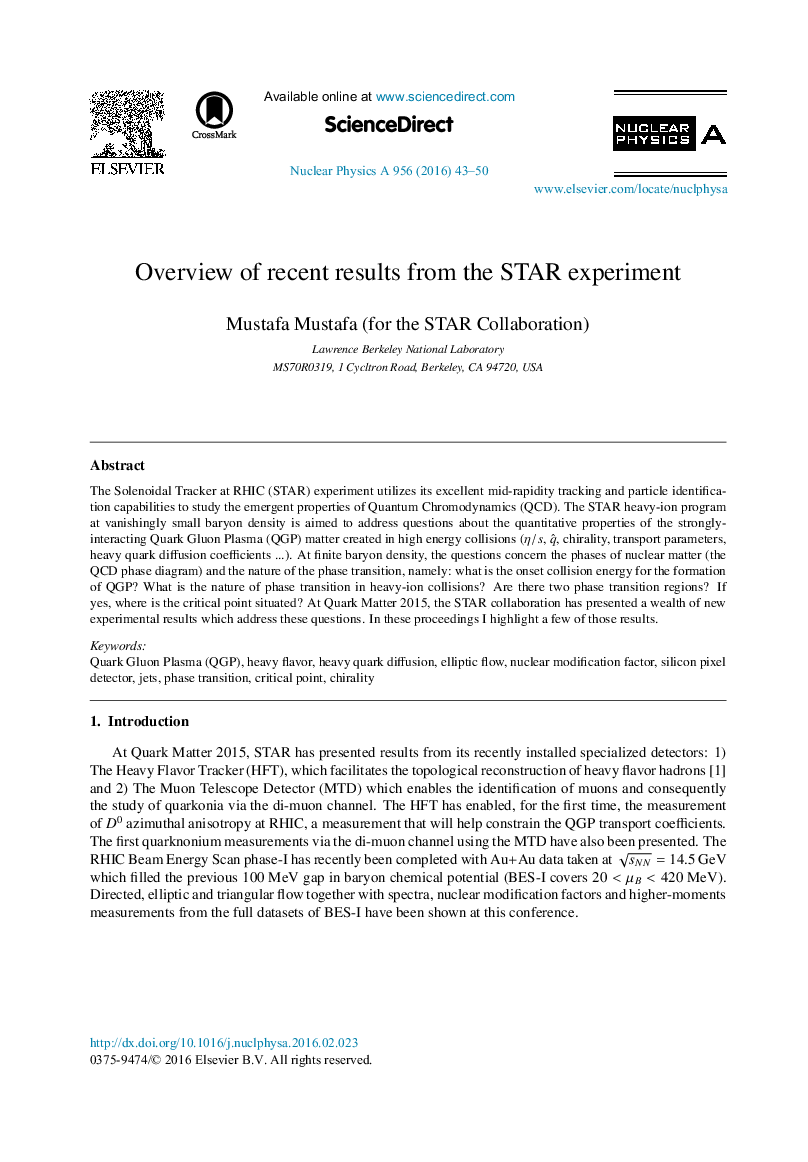| کد مقاله | کد نشریه | سال انتشار | مقاله انگلیسی | نسخه تمام متن |
|---|---|---|---|---|
| 5494143 | 1527068 | 2016 | 8 صفحه PDF | دانلود رایگان |
عنوان انگلیسی مقاله ISI
Overview of recent results from the STAR experiment
دانلود مقاله + سفارش ترجمه
دانلود مقاله ISI انگلیسی
رایگان برای ایرانیان
کلمات کلیدی
موضوعات مرتبط
مهندسی و علوم پایه
فیزیک و نجوم
فیزیک هسته ای و انرژی بالا
پیش نمایش صفحه اول مقاله

چکیده انگلیسی
The Solenoidal Tracker at RHIC (STAR) experiment utilizes its excellent mid-rapidity tracking and particle identification capabilities to study the emergent properties of Quantum Chromodynamics (QCD). The STAR heavy-ion program at vanishingly small baryon density is aimed to address questions about the quantitative properties of the strongly-interacting Quark Gluon Plasma (QGP) matter created in high energy collisions (η/s, qË, chirality, transport parameters, heavy quark diffusion coefficientsâ¦). At finite baryon density, the questions concern the phases of nuclear matter (the QCD phase diagram) and the nature of the phase transition, namely: what is the onset collision energy for the formation of QGP? What is the nature of phase transition in heavy-ion collisions? Are there two phase transition regions? If yes, where is the critical point situated? At Quark Matter 2015, the STAR collaboration has presented a wealth of new experimental results which address these questions. In these proceedings I highlight a few of those results.
ناشر
Database: Elsevier - ScienceDirect (ساینس دایرکت)
Journal: Nuclear Physics A - Volume 956, December 2016, Pages 43-50
Journal: Nuclear Physics A - Volume 956, December 2016, Pages 43-50
نویسندگان
Mustafa Mustafa, STAR Collaboration STAR Collaboration,